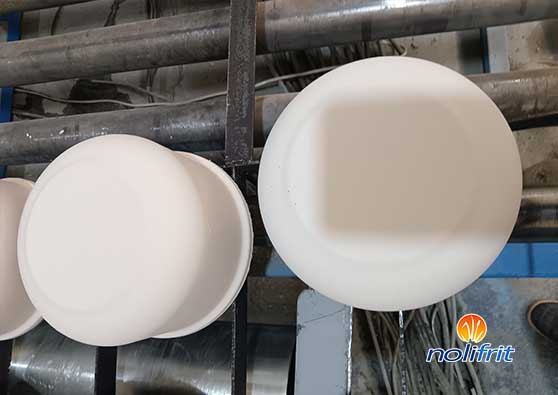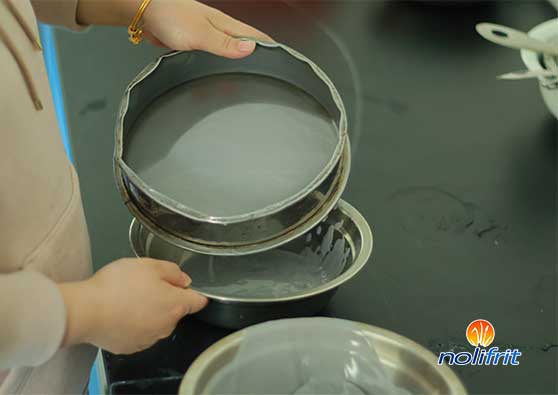Enamel Glaze Slurry Retention and Fineness
The grinding process of enamel glaze is mainly divided into two categories: dry grinding and wet grinding. Among them, wet grinding technology is widely used in the production process of daily enamel ground coat,cover coat, industrial anti-acid ground coat and cast iron glaze, etc. These products usually coated by wet dipping or spraying process. In the wet grinding process, enamel frit, grinding additives and water are mixed in a specific proportion to make enamel glaze slurry. If the retention performance of the glaze slurry is not good, it will directly lead to difficulties in the enameling operation and seriously affect the final quality of the enamel products.

Take a certain enamel pot manufacturer as an example. Its glaze retention had significant problems. After on-site testing and analysis by Noli technicians, it was found that the manufacturer's glaze was ground too finely, with 160 mesh being fully passable, and the slurry retention was extremely poor. Undercurrents were easily formed after enameling, resulting in thick accumulation of glaze slurry on the edge of the pot. In response to this problem, technicians have formulated standardized screening indicators for customers based on the product characteristics of enamel pots: the surface glaze needs to pass through a 160-mesh seive, and the 100ml sieve residue should be controlled within the range of 5-10g; the bottom glaze also needs to pass through a 160-mesh seive, and the sieve residue requirement is 3-7g. This can effectively control the coarseness and fineness of the enamel glaze slurry to ensure that it is within the standard range.

Meanwhile, in order to solve the problem of glaze retention, the technicians proposed a set of scientific and reasonable solutions: first, weigh a basin of glaze slurry, and then add magnesium sulfate solution and urea dissolved in hot water at a ratio of 50% of the weight of the glaze slurry multiplied by 0.2% (in the grinding stage, the addition ratio of magnesium sulfate and urea is 0.1% and 0.2% respectively), which is equivalent to 0.3% magnesium sulfate and 0.4% urea of the slurry weight. After adding, it needs to be fully stirred and sieved to significantly improve the retention performance of the glaze slurry. For enamel manufacturers, the application of retention agent should follow the "minimum addition" principle, that is, only the necessary amount of retention agent is added to maintain the suspension state of the glaze particles and avoid precipitation.
Finally, the enamel product manufacturers successfully solved the problem of glaze retention and fineness. It is worth noting that due to the different uses and coating requirements of different glaze slurries, the requirements for glaze fineness are also different. As a professional manufacturer of enamel glazes and enamel pigments, Hunan Noli has always been committed to providing customers with one-stop services and customized solutions to help customers create unique and differentiated products.